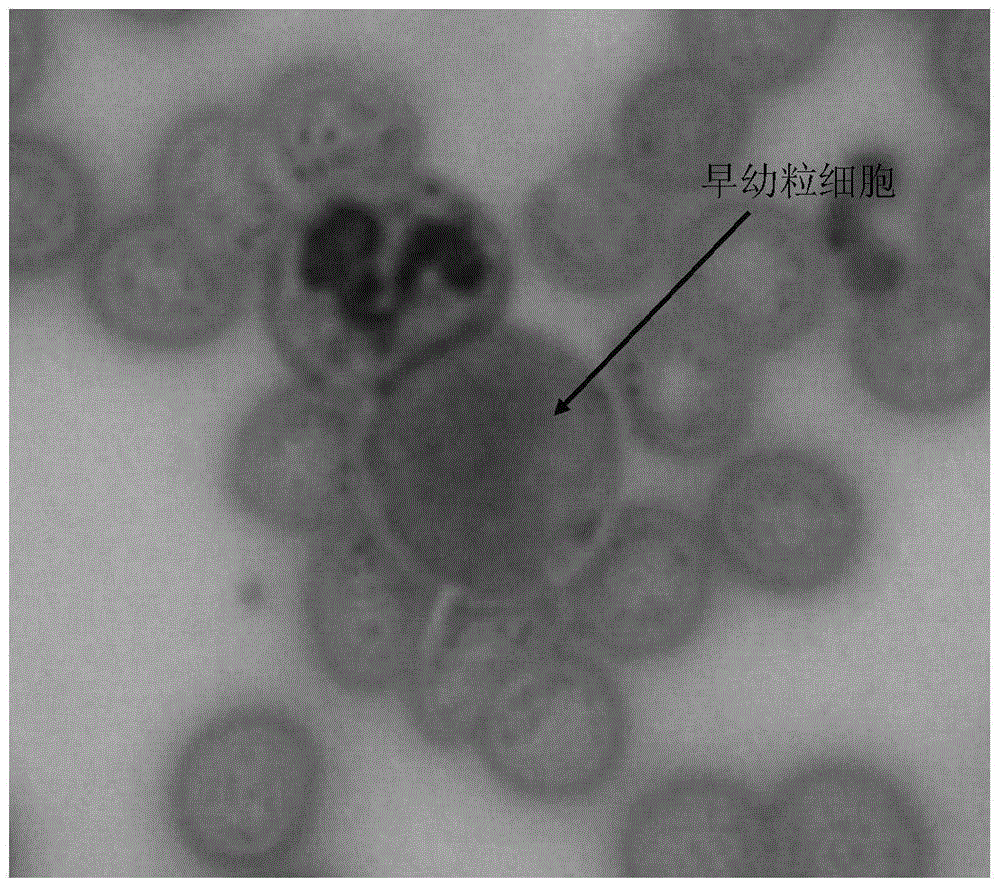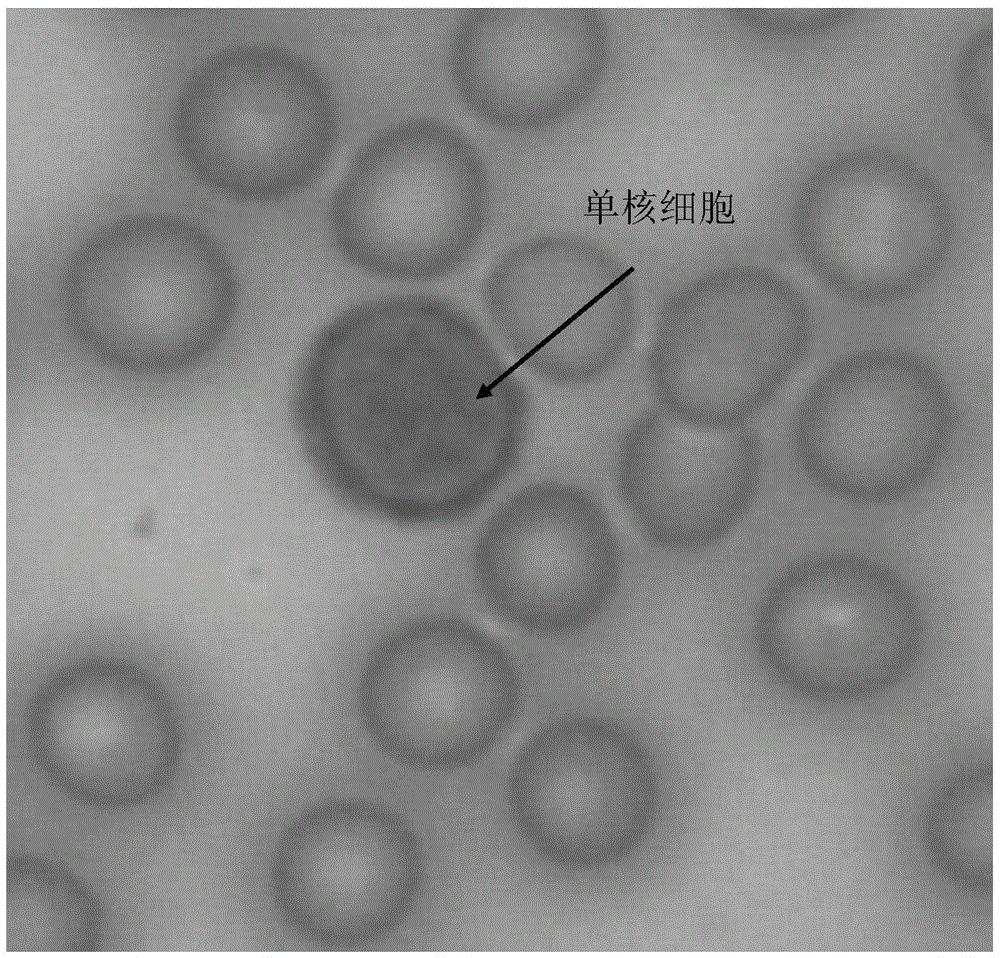Alpha-naphthol acetate esterase staining kit
A technology of naphthol acetate and naphthol acetate, which is applied in the field of α-naphthol acetate staining kits, can solve the problem of the large influence of NaF inhibition rate, the trouble of leukemia typing and identification, and the difficulty of directly distinguishing single nuclei Cells and promyelocytes, etc., to shorten the detection time, eliminate interference effects, and improve detection efficiency
- Summary
- Abstract
- Description
- Claims
- Application Information
AI Technical Summary
Problems solved by technology
Method used
Image
Examples
Embodiment 1
[0034] Embodiment 1: kit of the present invention and dyeing method
[0035] 1. Composition and preparation method of the kit of the present invention
[0036] Fixative: Weigh 20mgNa 2 HPO 4 12H 2 O, 100mgKH 2 PO 4 , add 30ml of distilled water, add 45ml of acetone and 25ml of formaldehyde after dissolving, adjust the pH value to 6.6 after mixing.
[0037] α-naphthyl acetate solution: Weigh 100 mg of α-naphthyl acetate and dissolve it in 10 ml of 50% acetone aqueous solution.
[0038] Azo dye solution: weigh 300mg of basic blue 54 and dissolve in 10ml of distilled water, the color is dark red.
[0039] Buffer (base solution): 0.067M phosphate buffer at pH 7.6.
[0040] Preparation method: Liquid A: Weigh 2.388gNa 2 HPO 4 12H 2 Add distilled water to dissolve O to 100ml; B solution: weigh 0.908gKH 2 PO 4 Add distilled water to dissolve to 100ml. Take 87ml of liquid A and 13ml of liquid B and mix well to get the product.
[0041] Rinsing solution: 0.1M acetic acid-...
Embodiment 2
[0047] Example 2: Existing conventional α-NAE staining method
[0048] 1. Composition and preparation method of conventional staining reagents
[0049] Action solution: 50ml of 0.05M phosphate buffer (pH7.6), 100mg of α-naphthol acetate dissolved in 1ml of 50% acetone aqueous solution, shake fully until most of the initial turbidity disappears, add diazonium salt (solid blue B) Shake 50mg, filter and use.
[0050] Counterstain solution: 10g / L methyl green aqueous solution.
[0051] 2. Dyeing method
[0052] (1) Fixation: Fresh smears were fumigated with formaldehyde for 5 to 10 minutes.
[0053] (2) Rinse with water for 5 minutes.
[0054] (3) Put into the working solution (37°C) for 1 hour, and wash with water.
[0055] (4) Counterstain with 10g / L methyl green aqueous solution for 5 minutes.
[0056] (5) Microscopic examination after washing and drying.
Embodiment 3
[0057] Embodiment 3: the comparison of kit staining of the present invention and existing routine staining method
[0058] Acute monocytic leukemia (M5) and acute promyelocytic leukemia (M3) patient blood cells were stained by using the kit of Example 1 of the present invention and according to the existing conventional staining method of Example 2, the results are shown in Figure 1-Figure 4 .
[0059] The dyeing result of the present invention shows that in the M5 type leukemia blood cells, the nucleus of the mononuclear cell line is bright reddish purple, and the cytoplasm is reddish purple, and α-naphthol acetate esterase in the mononuclear cells forms black granule precipitation; The nuclei of granulocytic cells are brown or dark brown, and black granular precipitates are formed at the α-naphthol acetate esterase in the cytoplasm.
[0060] Existing method dyeing result, in the M5 type leukemia blood cell, the nucleus of the monocyte cell line is green, and the α-naphthol...
PUM
 Login to View More
Login to View More Abstract
Description
Claims
Application Information
 Login to View More
Login to View More - Generate Ideas
- Intellectual Property
- Life Sciences
- Materials
- Tech Scout
- Unparalleled Data Quality
- Higher Quality Content
- 60% Fewer Hallucinations
Browse by: Latest US Patents, China's latest patents, Technical Efficacy Thesaurus, Application Domain, Technology Topic, Popular Technical Reports.
© 2025 PatSnap. All rights reserved.Legal|Privacy policy|Modern Slavery Act Transparency Statement|Sitemap|About US| Contact US: help@patsnap.com



